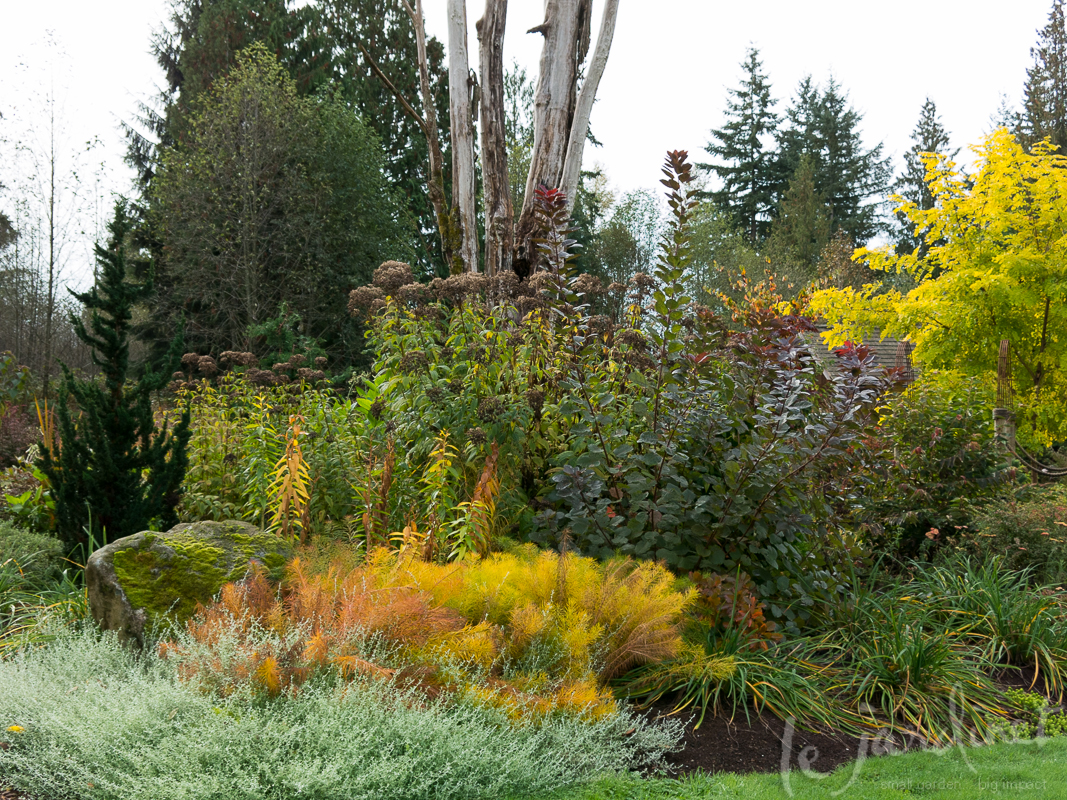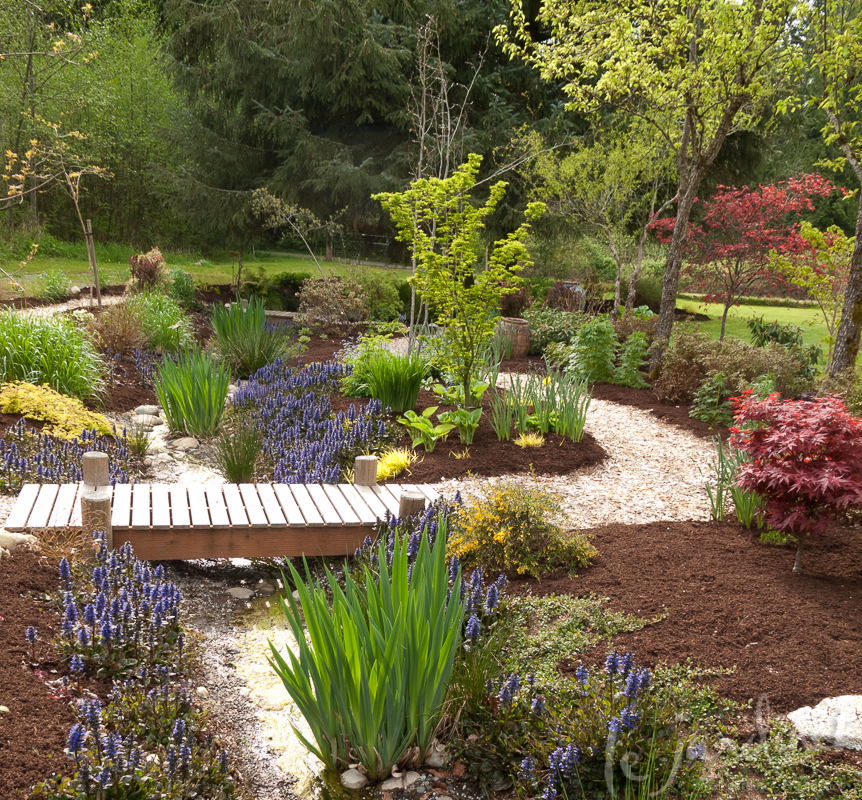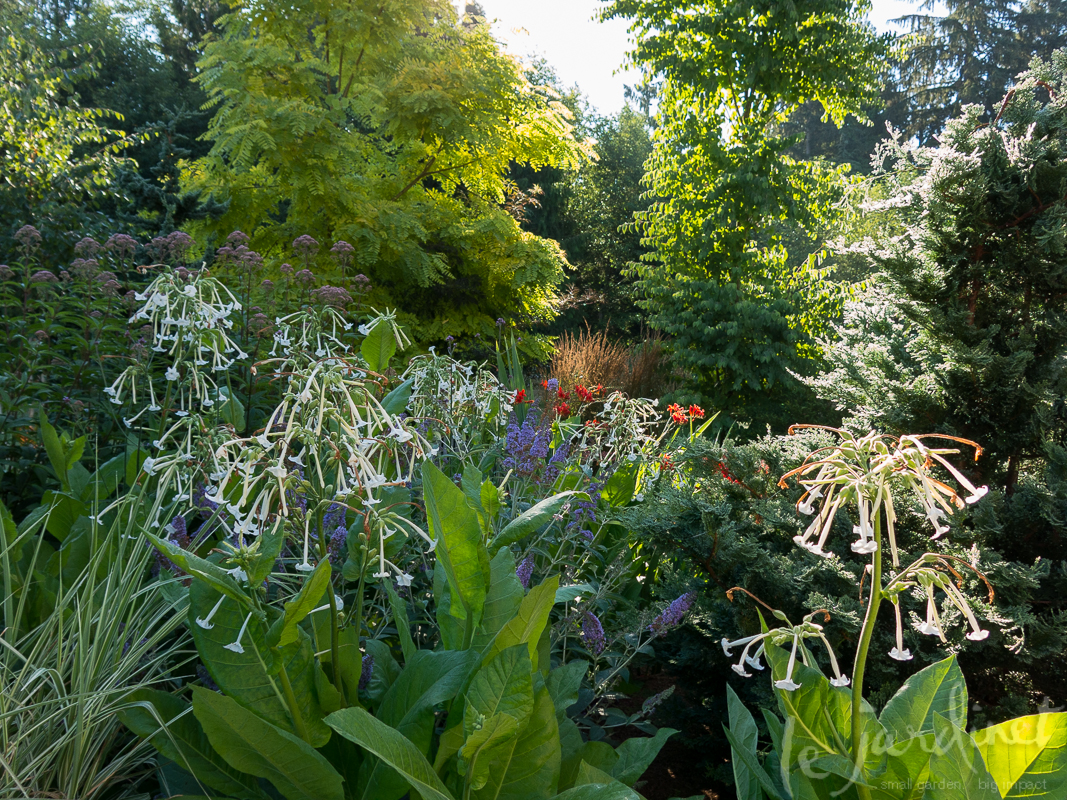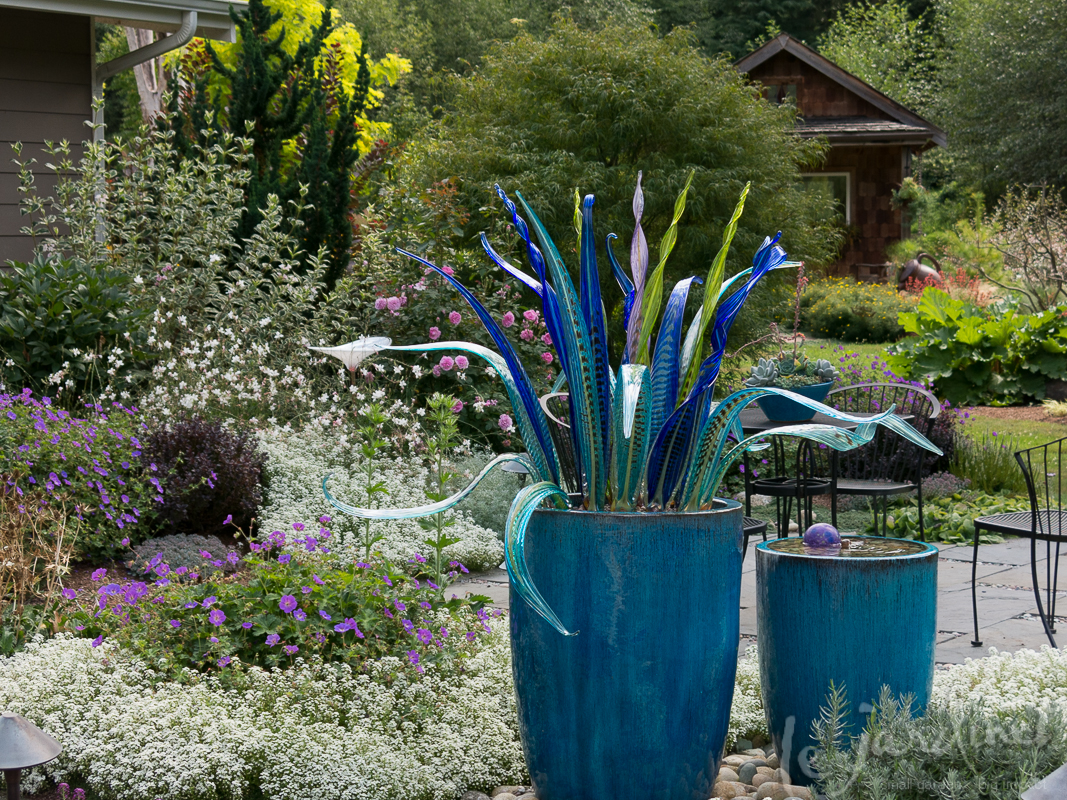Deer Resistant, Easy Care Annuals
You know the scenario; there's a space in the border. Which of course being a conscientious gardener means you have a duty to fill it. Such a dilemma typically results in hastily scribbled notes, a few iPhone snapshots for reference and hours of pondering. Your favorite gardening books, magazines and blogs all offer exciting suggestions, filling your mind with visions of bold shrubs, quirky conifers and romantic flowers.
Then reality hits. For some that's a budget crunch as we have to admit that mortgaging the children to buy that latest trillium may not be the wisest decision. Or you remember as you reach for the sunglasses that you live in Santa Barbara not Seattle so you have to focus on water-wise plants that love full sun. Maybe you have decided that this is the year you will look for plants that require lower maintenance – no primping or pruning? For me it's the deer. Having decided the size, shape, texture and color I need I then have to run my plant selection through my deer and rabbit resistant (hopefully) list. Actually I also need my garden to be drought tolerant (we live on acreage), low maintenance (I'm busy) and budget friendly (I'm cheap)
This used to be the point where I would close the gardening books and give up. However there is an easy and inexpensive way to fill those garden holes this year – with annuals that you can grow from seed right now. For the past couple of years I have been experimenting with using annuals as fillers in my garden and have really enjoyed the freedom of adding something for just one season.
Why Annuals?

Dibbers make easy work of seed sowing. Ours are made from salvaged wood
Their entire life cycle is complete in a single year. Unlike perennials that will often take three years to get into their stride, annuals go gang busters right from the start; instant gratification
They are usually pretty cheap, especially if you grow them yourself from seed.
The annuals I show here were all used in my landscape, received little or no supplemental water and weren't so much as sniffed by the deer or rabbits. I didn't dead head them, stake them or prune them. In other words they passed the rigorous Karen test!
Annuals as Problem Solvers
Use annuals as a temporary fix when something dies back
When my prized 6' tall Lochinch butterfly bush was abruptly cut down to a measly 6" after a harsh winter storm I planted a broad sweep of tall white tobacco plant (Nicotiana sylvestris) to fill the space. Their huge basal foliage rosettes quickly smothered any weeds (a bonus) and the tall spires of fragrant white flowers were a perfect temporary substitute for my shrub in scale, height, color (the butterfly bush has silver leaves) and perfume. At the end of the summer I pulled them out and added them to the compost pile and discovered that my butterfly bush was 4' tall again. That means I don't actually need them this year but they looked so pretty I may use them elsewhere.

Senorita Blanca spider flower is a lovely shade of white flushed with lilac. Grow it in the garden or container
Use annuals to fill gaps while specimen plants mature
Big plants cost big $$ so most of us have to buy small and allow time for things to grow. Annuals can quickly and inexpensively fill the gaps while the permanent plants mature. One of my favorites for this task is spider flower (Cleome), especially the shorter, non-smelly, sterile varieties such as Senorita Blanca by Proven Winners. Since this does not set seed you won't be able to grow it yourself which makes the plants rather pricey. However a single plant can easily fill a 3' x 3' area.
If you need height you may prefer to stick with the more traditional varieties – this cerise color was a standout against my golden locust trees. These are very easy to grow from seed and can be started on a windowsill

Lemon licorice plant does best in afternoon shade to avoid scorching. I loved the way it thread its way up through an adjacent Red Carpet barberry
Use as a short term groundcover
Bare ground is in invitation to weeds. I add mulch to conserve moisture and help suppress weeds but generally prefer not to use a permanent groundcover in my sunny beds as it means I can' t amend the soil with compost easily should I feel the soil fertility needs a boost. I've discovered two ridiculously fast growing annuals that make five star summer groundcovers; the silvery-grey Petite licorice plant and Lemon licorice plant (Helichrysum petiolare varieties).

The silvery haze at the lower left is the Petite Licorice. Looked great anchoring that corner of the border!
One 4" plant will spread 3' in every direction. They are reliably drought tolerant (i.e. I never watered them after they were planted) and the deer completely ignored them.
To add summer sparkle
My front garden needed some help in the sparkle department last year. I rely on white whirling butterflies (Gaura) for a hazy froth of white flowers from summer to fall but I lost quite a few over the winter and I wasn't sure if the remainder would really perform as I needed them to (we had a film crew due in July so time was of the essence!)
I bought a flat of simple white allysum and tucked the plants throughout the border; lining pathways, meandering between trees and shrubs and snuggling up to boulders. The results were so pretty I'm going to do it again but this time I'll grow them from seed.
Alyssum is available in several shades or mixed colors which may work better with your color scheme.
What are you growing this year?
This is the time of year to buy seeds so start planning! if like me you need to consider the deer you may find this resource helpful as a starting point.
I'm itching to try something new – any suggestions?
>






Thanks so much for this information. I'm excited to try the Necotiana. Love the large foliage.
We have a group of 7+ deer in our front garden daily. It's a challenge but I am determined to find plants they won't eat.
Happy Gardening.
Deb
Sierra Foothills, CA